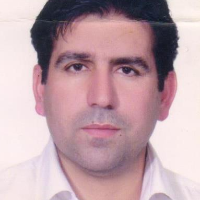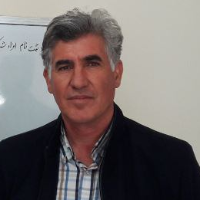The role of sanitary cuts in control of Persian oak dieback) Case study, second phase, Zagros, Ilam, Melah Siah)
The semi-arid vegetation area of Zagros is the second source of forest biomass in Iran and has a special environmental importance. Over the past decades, the ecological potential of this region has degraded due to severe human pressure, and its forest trees have declined in the last two decades due to drought stress and attacks by wood-eating pests and charcoal fungi. Since chemical control further disturbs the natural conditions in ecosystems and biological control requires long-term research, so the application of sanitary cuttings is the most important way to control the degradation of Zagros forests in the current situation. Numerous scientific references have reported the positive role of branching and pruning of forest and garden trees in controlling pests and diseases. This article is the results of the second phase of a study that investigated the proper method of sanitary cutting in the forests of the Zagros vegetation area in the next four years. The aim was to investigate the role of five cuttings treatments in two forms of high and coppice to control the dieback of Persian Oak trees in the Zagros area.
In this study, the effects of vegetative form and sanitary cuttings on the survival and vitality of Persian oak after eight years was tested and compared with the project results in the four-year period of the first phase. Vegetative form was studied at two levels of high and coppice and cutting type in five levels including removal of infected parts of trees, complete removal of crown, cutting from height 10 cm and cutting from 10 cm depth and control treatment (without sanitary cutting). The researches treatments were compared with non-parametric tests due to the quality of the vitality data and the lack of parametric statistics assumptions in the survival treatments. Pair of two-phase research treatments were compared with Wilcoxon test, two vegetative form treatments with Mann-Whitney test and group cutting treatments with Kruskal-Wallis test and in pairs with Dunn-Bonferroni test.
The results showed that the difference in survival and vitality of the two vegetative forms in the two phases of the study was not significant at the 5% probability level. The difference of survival of cutting treatments in the two phases of the study was significant in all treatments at the level of 1% probability, except in the treatment of cutting infected sections. The difference of viability of cutting treatments in the two phases of the study was significant only in the control treatment at the level of 1% probability, in contrast to survival. The results of survival and vitality after eight years from the start of the experiment in the second phase showed a significant difference (α=1%) in the cutting treatments and no significance (α=5%) in the two vegetative form treatments. Also, the results of pairwise comparisons showed that the difference in the vitality percentage of the two treatments cut from the depth and from a height of 10 cm with the control treatment and the difference between the two treatments of cutting infected parts and complete cutting of the crown were not significant (α=1%).
In general, the targeted cutting treatment of infected parts in terms of survival (88.8%) which was the main factor of the study showed the best result alone and in terms of vitality (87.4%) with complete crown cutting treatment. Therefore, this sanitary cut is recommended to control the dieback of Persian oak trees in similar forest areas in the Zagros.
- حق عضویت دریافتی صرف حمایت از نشریات عضو و نگهداری، تکمیل و توسعه مگیران میشود.
- پرداخت حق اشتراک و دانلود مقالات اجازه بازنشر آن در سایر رسانههای چاپی و دیجیتال را به کاربر نمیدهد.



